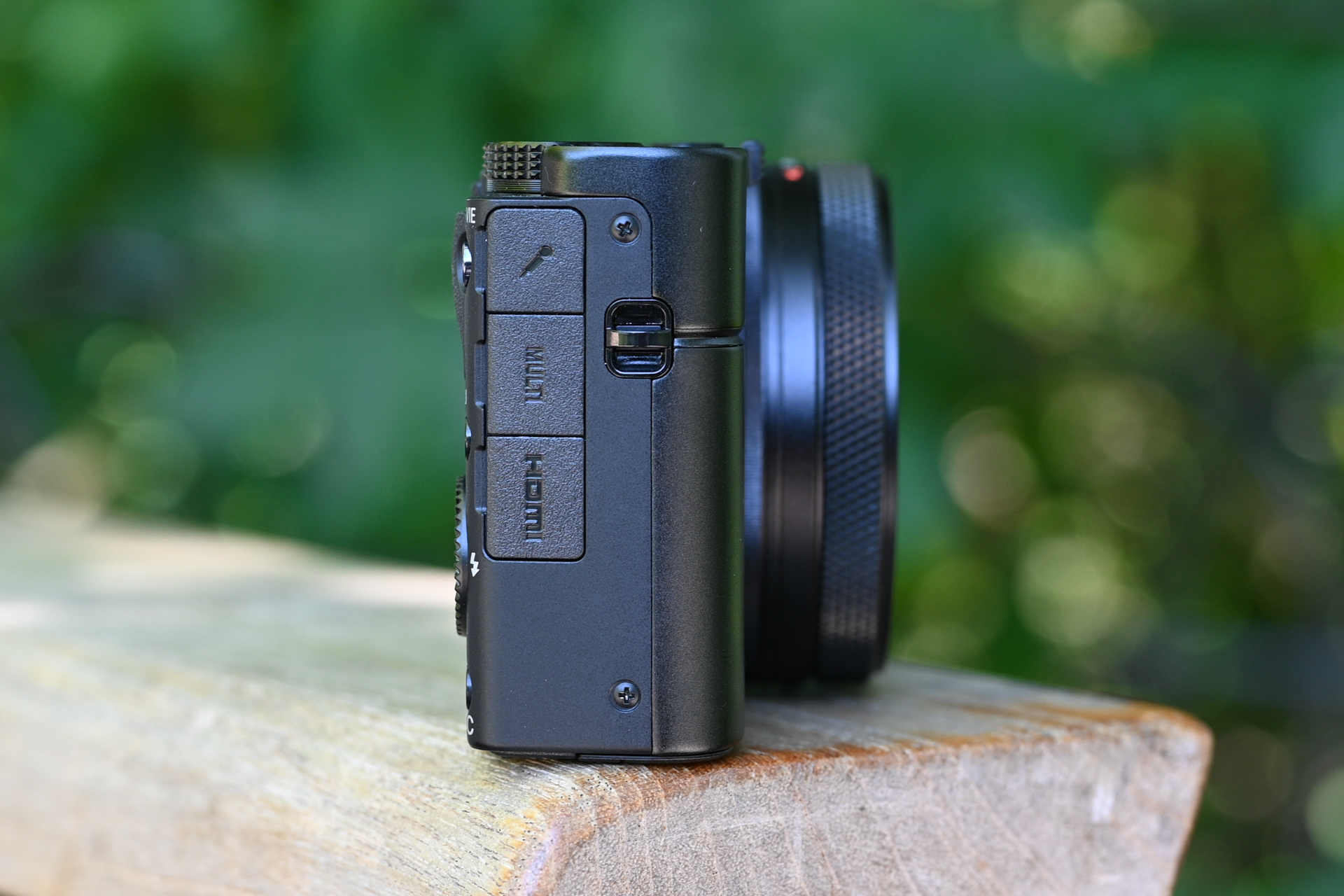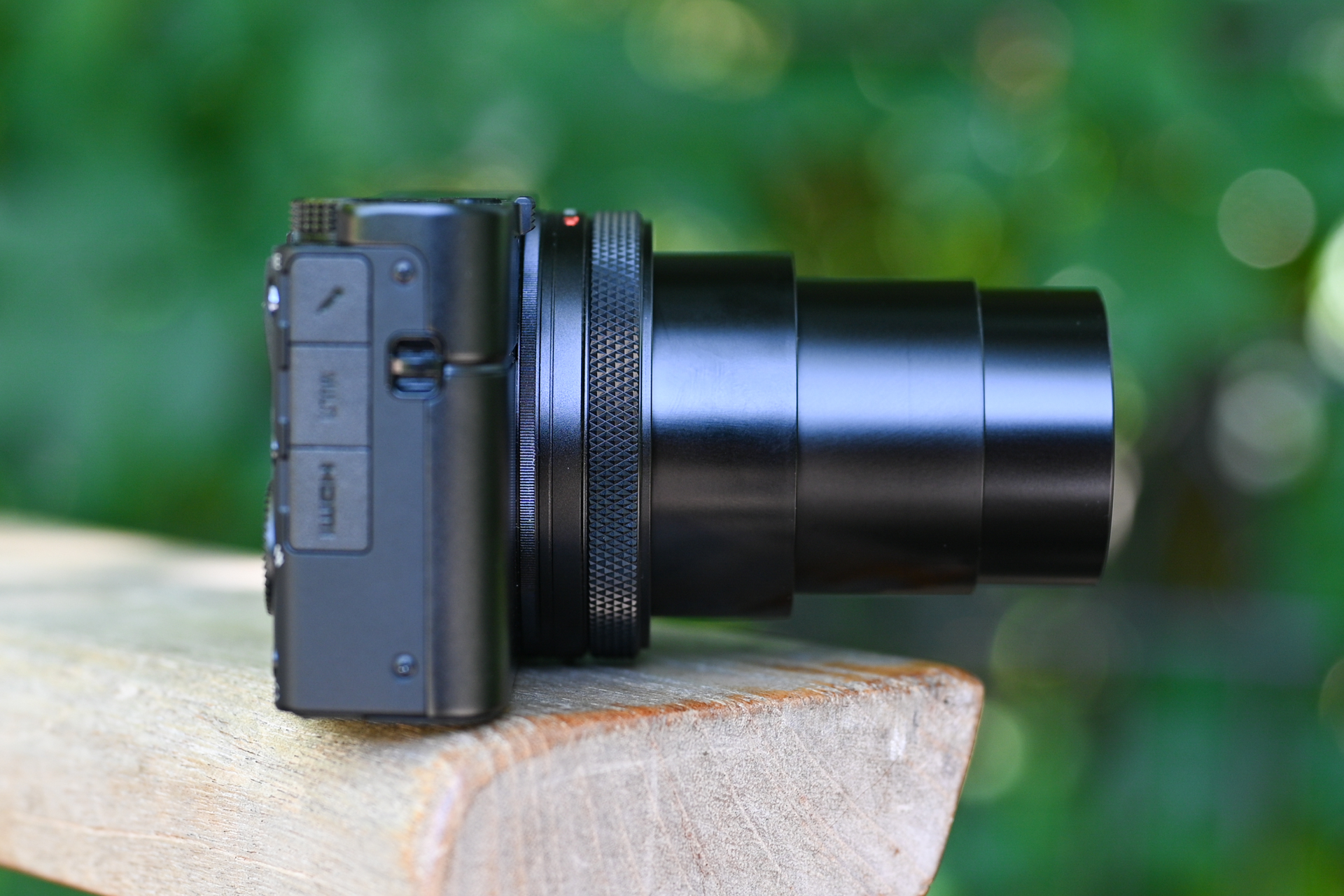Why you can trust TechRadar
Build and handling
- Very compact and solid metal body
- Lack of grip and only a little rubber used
- De-clicked control ring around lens
The RX100 design has barely changed since the start of the series back in 2012, and with the exception of some minor cosmetic differences the Sony RX100 VII looks identical to the RX100 VI, while the metal body feels just as solid as those of previous models.
It's impressive when you consider the raft of features Sony has managed to pack inside that small body, not least that optic. But this also means the same criticisms can be aimed at the new model as were leveled at its predecessors, such as the lack of a grip around the front, and only a small square of rubber on the back plate where the thumb falls.
This makes it less comfortable to handle than rival models, such as the Canon PowerShot G7 X Mark III; it's clearly a camera that's designed to be as compact as possible, although you can get an optional grip if you decide you need one.





One advantage the RX100 VII has over some rivals, however, is that the rear control dial can be rotated without the thumb constantly bashing into the side of the LCD screen, on account of it having a thin profile and being flush with the back plate. This is often a challenge on such small bodies, but here it's only really a small issue once the LCD is extended out from the body a little.
The electronic viewfinder springs up easily from the top plate when you release the catch at its side, and, as on the RX100 VI, you no longer need to pull the viewfinder back before you can use it.
One advantage the camera has over some rivals is that the rear control dial can be rotated without the thumb constantly bashing into the side of the LCD screen
The control ring around the lens has a knurled finish that makes it nice to operate. It's de-clicked, and provides no physical feedback as standard, although the camera does make small clicking sounds as it's rotated to make up for this. The fact that it's de-clicked makes it more suitable to use during video recording, where the camera would otherwise pick up operational sounds, although it's a minor annoyance that there's a slight lag between the dial being turned and settings being registered.
Autofocus
- Real Time Tracking and Real Time AF
- 357 phase-detect point and 425 contrast-detect points
- Excellent face and eye detection
The RX100 VI packed a great autofocus system, but that didn't stop Sony making better autofocus one of the priorities in the RX100 VII. The AF systems on recent Alpha models, together with firmware updates to older cameras, have ramped up performance across that line, and now Sony is looking to bring same magic to its Cyber-shot range.
Sign up for breaking news, reviews, opinion, top tech deals, and more.
So what's new? Well, there are now more phase-detect AF points for a start, up from 315 on the RX100 VI to 357 here, and these cover 3% more of the frame than before. The previous 25-point contrast-detect AF system has also been ramped up to a 425-point system, with Sony promising that the camera can focus in as little as 0.02 seconds.
The biggest change autofocus-wise is Real Time Tracking, which uses AI-powered tools to automatically switch between standard autofocusing when tracking a moving subject and face/eye tracking when the system detects a person's face. This should make it easier to quickly focus on what's key as people step in and out of the frame, or change position in relation to the camera.
The biggest change is Real Time Tracking, which uses AI-powered tools to automatically switch between standard autofocusing when tracking a moving subject and face/eye tracking when the system notices a person's face
Partner this with continuous autofocus and you have a very powerful combination. The availability of usefully broad focal range shows just how impressively this can work, as you can zoom to the telephoto end, have the camera pick out a very small subject in the distance, and watch as it sticks with it.
The face detection system doesn't need to have too big a face in the frame for it to recognize what it's shooting, although subjects do need to be a little closer in order for the system to start detecting and tracking the eye (eye detection is fairly pointless with more distant subjects anyway). When this does kick in, it manages to track eyes very well, even when the subject is side-on to the camera.
This system works impressively well during video recording too, where the camera stays with a human subject both as they move across the frame and as they move closer to or further away from the camera. Sony has shouted loudly about this feature, and you can see why.
There's little doubt that this is the best autofocus performance you can get on a compact camera right now, and this would make the RX100 VII a particularly strong choice for families – trying to keep a lock of a moving child can be quite the test for any camera.
Current page: Build, handling and AF
Prev Page Introduction and key features Next Page Performance and image quality